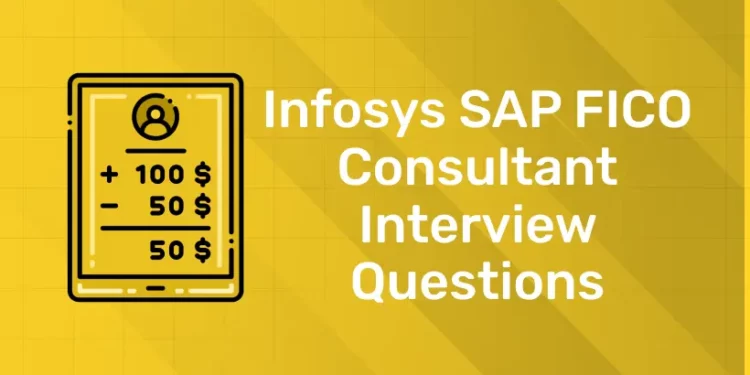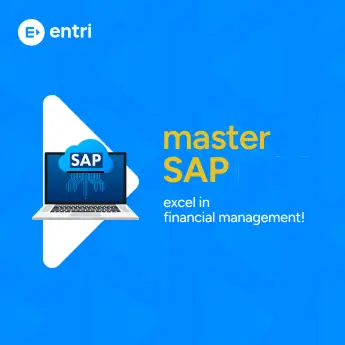Table of Contents
It is quite difficult to be ready to answer both functional and technical questions during an Infosys SAP FICO Consultant interview. Expertise with SAP FICO (Financial Accounting and Controlling) modules is essential for this position since they aid businesses in efficiently managing their financial operations. Configuration, interaction with other SAP modules, and real-time problem-solving situations are among the issues a candidate might anticipate. You will probably be evaluated in the interview on your familiarity with fundamental financial procedures, your aptitude for enhancing and customizing SAP features, and your background in addressing end-user inquiries and system upgrades. Infosys also prioritizes matching business goals with SAP solutions, so be prepared to talk about your experience integrating solutions that promote productivity and business expansion. In this article we are providing a few interview questions and answers for Infosys SAP FICO Consultant.
Join to learn SAP FICO from the Experts! Click for the demo class!
Infosys SAP FICO Consultant Interview Questions And Answers
The following is a set of questions and answers for the Infosys SAP FICO Consultant interview that you can practice for:
Q: What is SAP FICO?
SAP FICO is an acronym for Financial Accounting (FI) and Controlling (CO). The FI module deals with external financial reporting, including balance sheets and profit and loss statements, While the CO module is concentrated on internal cost reporting and decision-making. When combined, they provide businesses with the ability to monitor and control their financial situation.
Q: What are the key configurations for setting up SAP FICO?
Important setups consist of:
- Setting corporate codes.
- Making an Accounting Chart.
- Setting up the variation for the fiscal year.
- Establishing tax codes.
- G/L account definitions and posting of keys.
Q: What is an ‘Automatic Payment Program’ (APP) in SAP FICO?
The process of paying suppliers, clients, and other third-party payees can be automated with the use of APP. By choosing the bills that must be paid and completing the payments via options like bank transfers or checks, it simplifies the payment procedure.
Q: What is the purpose of the General Ledger in SAP?
Each and every financial transaction made by the company is tracked in the General Ledger (G/L). It offers a thorough record of all accounting operations and acts as the foundation for financial reporting, enabling real-time tracking of financial situations.
Q: What is parallel accounting in SAP FICO?
A business that wants to adhere to various accounting standards, such IFRS and local GAAP, can keep numerous sets of books by using parallel accounting. With parallel ledgers, SAP is able to do this.
Q: How can you handle errors in SAP FICO?
It is possible to fix errors in SAP FICO by:
- To identify the issue, go over the error messages.
- Checking for field-specific issues with SAP’s troubleshooting tools, like the SAP F1 Help.
- Looking at error reports or transaction logs.
- Verifying the accuracy of setup settings by cross-checking.
Q: What is a ‘Field Status Group’ in SAP?
When uploading documents in SAP, a Field Status Group manages which fields show up. Depending on the kind of transaction being entered, it decides which fields are hidden, compulsory, or optional.
Q: What is the use of ‘Cost Center’ in SAP Controlling?
A department, function, or location within an organization is represented by a Cost Center, a module component in the Controlling module. Better cost control and analysis are made possible by its assistance in tracking and managing expenses for certain departments or operations.
Q: Explain the significance of a Chart of Accounts (COA).
A company’s financial structure is defined by its COA, a structured collection of G/L accounts in SAP. Every account has a unique code that is used to classify various financial transactions, including income, expenses, assets, and liabilities.
Click to join the best SAP FICO course in 2024! Click here to register!
Q: How is Asset Accounting integrated with Financial Accounting?
The SAP FICO sub-module known as Asset Accounting is used to track and manage the fixed assets of a company. To guarantee that asset purchases, depreciation, and disposals are appropriately documented in the business’s financial records, it interfaces with the G/L.
Q: What are ‘Internal Orders’ in SAP?
Within a company, internal orders are used to track the expenses associated with particular tasks or jobs. They make it possible to track internal project finances in great detail, which guarantees accurate cost allocation and budgeting.
Q: What is a fiscal year variant in SAP?
The fiscal year structure of a corporation is outlined in a fiscal year variant, together with the number of periods (usually 12 for each month) and any unique periods for adjustments. It facilitates methodical accounting period management and closure.
Q: What is the purpose of a dunning procedure in SAP?
The dunning procedure or automated payment reminder process employs a deceptive technique to notify clients about past-due payments. Through the definition of actions like reminding via email or letter, imposing late fines, and raising the communication level, it aids in the management of accounts receivable.
Q: Describe the steps involved in closing a fiscal year in SAP FICO.
- Make that all of the year’s financial transactions are documented, and then make the required corrections.
- For financial statements, tax reports, and automatic clearing, use transaction codes such as F.01, F.16, and F.13.
- Update asset values by carrying out depreciation runs.
- Set up the closed year to be locked to prevent additional modifications, and allow postings in the new fiscal year.
- For the closed fiscal year, prepare the final financial reports and statements.
Q: What is SAP GR/IR (Goods Receipt/Invoice Receipt) account?
When products are received but invoices have not yet been posted, transactions are temporarily recorded using the GR/IR account. It makes sure that before the invoice is sent out, financial records show that the goods were received.
Q: What are validations and substitutions in SAP FICO?
Validations: Before uploading a document, make sure certain requirements are satisfied. Verifying if a cost center is included for an expense posting, for instance.
Substitutions: When uploading documents, automatically update or fill up fields according to preset rules.
Q: How do you perform Bank Reconciliation in SAP FICO?
- If you want to upload electronic bank statements, use transaction codes such as FF67.
- Match items from imported bank statements with open items in the G/L accounts either automatically or manually.
- To balance the bank statement and the company’s data, remove any matched items.
- Look into and fix any irregularities or unmatched transactions.
Q: Explain the concept of ‘Contingent Liability’ in SAP FICO.
Potential liabilities, such as litigation or guarantees, are obligations that might develop in the future. In order to ensure accurate financial reporting and risk management, contingent liabilities in SAP FICO are managed by making the necessary provisions or reserves in the financial statements to reflect these prospective commitments.
Q: Explain the use of ‘Payment Blocks’ in SAP FICO.
Payment blocks are used in specific situations to stop payments to customers or vendors. When certain issues, including invoice discrepancies, disputes, or outstanding approvals, are handled, they can be applied at the document or master data level to stop the payment process. Payment blocks guarantee the processing of only legitimate and approved payments.
Q: What is ‘Batch Input’ in SAP FICO and how is it used?
One technique for automating the processing of massive amounts of data into SAP FICO is batch input. It entails setting up batch input sessions with a number of transactions that need to be handled automatically. This technique is frequently used to upload large amounts of data in bulk, minimize errors, and publish several invoices or payments.
Join Entri’s SAP FICO Training Course today!!
Preperation Tips
Below are some basic interview preparation guidelines for an Infosys SAP FICO Consultant.
- Make sure you comprehend the fundamental ideas of the General Ledger, Accounts Payable/Receivable, and Cost Center modules of Financial Accounting (FI) and Controlling (CO).
- Learn about the Chart of Accounts, Posting Keys, and Fiscal Year Variants setups in SAP FICO.
- Understand the connections between SAP FICO and other modules, such as MM (Materials Management) and SD (Sales and Distribution).
- Prepare an explanation of real-world situations in which you fixed intricate SAP problems or enhanced workflows.
- Examine the SAP processes used to generate cost analyses, profit and loss reports, and financial statements.
- Practice using frequently used transaction codes, such as FB50 (Post Document), F-02 (G/L Account Posting), and others.
- It is important to stay up to date on the most recent SAP developments, especially S/4HANA, since many businesses are moving toward it.
- Infosys may also evaluate your soft skills, so be ready to answer questions concerning communication, cooperation, and project difficulties.
- Be ready to talk about past assignments and your role in SAP upgrades or installs.
- Recognize the business strategy of Infosys and the role SAP FICO plays in their advisory services.
CONCLUSION
A strong grasp of the SAP FICO module’s functional and technical features is necessary to prepare for an Infosys SAP FICO Consultant interview. Pay close attention to the setups, integration points, and important concepts. Be prepared to provide examples from real-world situations to illustrate your problem-solving skills. Being well-versed in SAP tools and procedures and knowing Infosys’s methodology for business solutions would make you look like a strong, competent applicant. Good Luck!










